Installing Hardwood and Engineering Hardwood
hkwan
6 years ago
Featured Answer
Comments (11)
hkwan
6 years agolast modified: 6 years agoRelated Discussions
engineered hardwood floor over old hardwood floor
Comments (14)You need to do a little more archeological digging still. You need to know the whole construction of the floor before you can decide how best to install something new. I'd take up that plywood piece in the kitchen and see what's under it. It's higher than the surrounding floor, so needs to go. You should also be able to see from there what subfloor is under the original kitchen hardwood. It's too bad the space under your entryway is finished, but I'd still do some exploring from below to see what's under there, and to figure out the fix to stop it from squeaking. Is it drywall below or a drop ceiling? I know it probably seems like a pain to tear out drywall, but if you cut out a clean patch, like 2' x the width of the joists, it'll be relatively simple to repair. Just make sure to cut it down the center of the joists so that there's room to screw the patch piece to it later. Cut the hole under the area that squeaks the most, if you can. Have someone walk on and watch the floor from below to see what's moving. It might be as simple as pounding in a couple shims from below, or face-nailing a loose board from above. You want to find out what's underneath the hardwood. It might be laid directly on the floor joists, or there might be 10" wide boards that the hardwood is nailed to. Another thought is to take out a board in the hallway, since that's not original and you want to replace it. See what the subfloor is there. I am a bit puzzled at why, when you've stripped the kitchen down to the original hardwood, it's still higher than the hallway floor. Is your current surface perhaps not the original kitchen hardwood? Peeling back the plywood area will help determine that. BTW, I haven't heard of that stop squeaking product you linked to, so can't offer any personal opinion. And don't pour self-leveling compound over top of hardwood. It needs to go over plywood....See MoreEngineered Hardwood versus Hardwood
Comments (23)ok, this is an area where I actually know something! I sold and spec'ed hardwood for a custom shop before my mommy-life. The information you are getting here is correct. Engineered floors will give you 1-2 refinishings ON A PERFECT SUBFLOOR. One of the issues that sometimes arises if there are inconsistanies in the height of your subfloor. Because there is thinner wood wearlayer (before you get to the engineered wood) there is the chance that you can damage the floor irreparably when you sand it. Now I only saw this saw this happen twice, once on a loft job and once in an older home. The loft was more subtle as it was over concrete, the old house more obvious as they were DIYers and picked engineered flooring to try to negate their irregular subfloor (they neglected to tell us that that was why they chose engineered, we would have talked them out of it had we seen the floor first) Neither of their claims to the manufacturer were fully settled because both times they did not follow the guidelines for floor prep. The loft job was also a materials only job for us with their GC laying the floors but he insisted he knew what he was doing. A good engineered floor will not be cheaper than most of your nail down options because the production costs are higher. Now having said that, GOOD engineered floors certainly have their place in places where you can't put traditional hardwood due to height restrictions or concrete subfloors. My boss had a great engineered floor in his basement and it survived a flood remarkably well (it was ash, Kahrs brand out of Scandinavia and one of the beefier engineered floors and one of the pioneers) My Grandmother also had a Kahrs floor in her ground suite condo and she LOVED it and I was impressed by the milling. I'm considering it for our basement because it's warmer and less echo-y than laminate There has been a lot of 2nd rate engineered flooring coming out of China and being labeled for all sorts of different companies. You should be able to tell an engineered sample because the layers are sandwiched together and the tongue will be a different wood than the top (showing) layer. Distressed finishes are usually more expensive because of the extra step in manufacturing to make it distressed. That is different than just getting a lower grade of hardwood like a rustic or tavern grade (in solid hardwood). Those grades have more character but they often don't carry a warranty and generally have a higher waste percentage. Another thing to think about---if you ever have to replace part of the floor, you will always be able to replicate 3/4" thick hardwood but engineered floors are more like tile, they change and get discontinued over the years. You could go pre-finished, save the hassle of site finishing but with the thicker wear-layer a 3/4" nail down floor offers. Only you will know if you can handle beveling or not. The changes in milling the last 10 years are huge. The bevel in your better milled wood is tiny. I like Canadian mills, Model or Mirage for pre-finished. Remember that if you ever re-finish, the bevel will disappear and you will, essentially have a site finished floor. One benefit that many people don't know about? With a prefinished tongue and grooved floor you can have a good installer cut out a single board (or more) from your floor if it gets damaged which is why we did a fair bit of pre-finished in new homes since inevitably we would get call-backs at move in to repair trade damage (@#$%^ plumbers and their big wrenches!). Prefinished hardwood deals the best with shinkage and expansion issues because the finish is on individual boards. Site finished floors are more labor intensive but the materials are cheaper (apples to apples). They are what many people consider the gold standard however there are more steps and you don't always know how it's going to look until it's done. There is more chance of finish contamination and trade damage during the rest of the building process. We refinished 100 year old floors. I loved the idea that there wasn't 4 generations of carpet and crap in the landfill. Definitely a forever floor and it can usually be re-sanded for all but the very worst water damage (think entire house under water for a few days) If you are going with a wide plank, keep in mind your species and humidity level (and your ability to keep humidity stable). The wider the plank (with 3/4" thick flooring), the more obvious shrinking and expanding will be. If you take a 2" wide board and it shrinks 2%, it isn't very noticeable. If you take a 6" wide board and it shrinks 2% the gaping will be more noticeable and in the case of a site finished floor *could* pull your finish apart. You'll need to find a flooring contractor in your area with lots of experience. Most of the best hardwood shops ONLY do hardwood. Beware of carpet shops and many of the big box stores in many instances. Make sure they are accredited with the NWFA (national wood flooring association) http://www.nwfa.org/member/ good luck!...See MoreSolid hardwood downstairs only or engineered hardwood throughout?
Comments (4)I too cannot see the savings of remove+replace. A sand/refinish averages $5/sf. It is minimally disruptive (ie. it does NOT involve demolition) and it will cure in 10 days (assuming you are using a high-end water based finish). Now an engineered hardwood is SUPPOSED to be more expensive than solid. Yah. I said it. Engineered (same cut, width, thickness, installation method) should be more expensive than solid. Hmmmmmm. My spidy senses are tingling. Now on to the cost of hardwood upstairs. Carpet removal/disposal = $1.50 - $2/sf (depends on where you live). Repair and prepare the wooden subfloors (usually 'bad' underneath carpet...carpet hides the WORST subfloors) $2-$4/sf. Yep. Just ASSUME you will be spending $3/sf for the subfloor prep upstairs. Now for the cost of solid hardwood (regular 3" width) = $5/sf. Installation + finishing = $3-$4/sf. Right. A regular solid hardwood (nothing special) with install = $8 - $10/sf. Now compare that to a 'sand and refinish' of $5/sf. Wow. It is CHEAPER to do the sand and refinish. Hmmmm. Now imagine the COST of demolition for the HARDWOOD....yep. You can add MORE to that cost. And again the subfloors have to be looked at. More costs. Now imagine the cost of a MORE EXPENSIVE engineered hardwood....$8 - $12/sf for material only. Installation is extra ($3-$4/sf for factory finished hardwood). I tell ya. The $5/sf sand/refinish is looking REALLY GOOD right now. Ignore the width of the planks. They are classic and are probably appropriate for the age of the home. It is your money and your home. If you believe an engineered hardwood is CHEAPER than $5/sf sand and refinish (including install and subfloor preparation) then you are welcome to find out the reality of the situation. We are going to tell you the 'cheap' wide plank engineered hardwood is not going to give you the 'life expectancy' that a 'regular' 3" wide solid hardwood ($5/sf material). It just won't....See MoreWhat hardwood or engineered hardwood product best for concrete slab?
Comments (21)Leather is the most 'recognizable' pattern for cork (other than the ground up cork board look). When it is laid it looks like hardwood flooring using 'shorts'. It has a bit of a brick look to it. Ignore the 'pink' in the samples. The pink is the very first colour to fade away. It takes a few months for the pink to disappear but once it is gone the cork (Leather and Logan) will look more like oak in tone (yellowish with some hints of green and some gray). It is a 'directional pattern' which means it has a 'linear' sense to it. The Logan is the most expensive cork pattern you can get. The slices of pattern are random. They are hand cut and hand laid. It takes *roughly an hour for 1 person to arrange 10sf of the pattern. It is STUNNING. It looks more like stone. It is random...did I mention the pattern is random? Leather and Logan can have the extra 2 coats of the Loba 2K Supra AT = super tough. The Latte is a FANTASTICLY tough finish. It has the polypropylene finish on it. This is the 'non-vinyl' product Cancork sells. It is tough....right after that it is SUPER TOUGH. And then for good measure, it is TOUGH!!! For a Rental property, the Latte is a product I would recommend. It does NOT need the Loba product. That means you save $1.50/sf RIGHT AWAY. It can handle 3mm or 6mm cork underlay. If you are looking for temperature control, then I like the 6mm underneath...but CHECK your door heights, etc. All you need to do is take your floor sample and the underlay sample they sent you (their supposed to do that...sigh) and see if it 'slips' underneath the doors in your home. It is that simple. I hope that helps... As for the Tacoma...I'm guessing you are looking at KILOGRAMS (700 kg) as your weight limit = 1540 lbs. The weight of a standard skid of cork flooring = 1000sf (ish...depends on the product) = *roughly 2000 lbs. And the skid sizes are PERFECT to fit between the wheel wells of a truck bed. I've watched this stuff get loaded into pick-up trucks for 6+ years. A forklift operator can drop that baby into your truck (so long as you do NOT have a 'cap-it') and off you go. If you only have a short way to go, the 2000 lbs won't be much of a problem...I just wouldn't do a trip to Bella Coola with it. ;-)...See MoreHelen
6 years agolast modified: 6 years agohkwan
6 years agoSJ McCarthy
6 years agohkwan
6 years agohkwan
6 years agohkwan
5 years ago
Related Stories
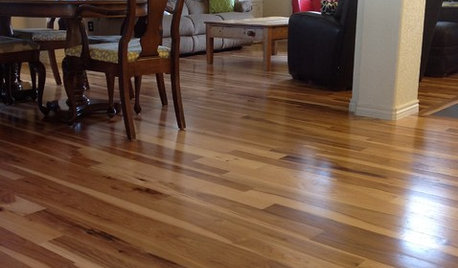
MATERIALSWhat to Ask Before Choosing a Hardwood Floor
We give you the details on cost, installation, wood varieties and more to help you pick the right hardwood flooring
Full Story
REMODELING GUIDESContractor Tips: Smooth Moves for Hardwood Floors
Dreaming of gorgeous, natural wood floors? Consider these professional pointers before you lay the first plank
Full Story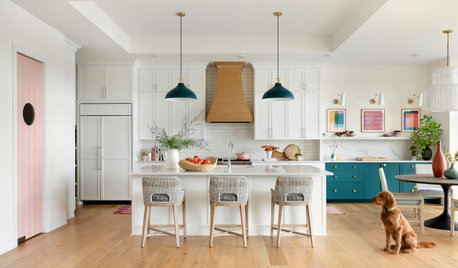
HOUSEKEEPINGHow to Clean Hardwood Floors
Gleaming wood floors are a thing of beauty. Find out how to keep them that way
Full Story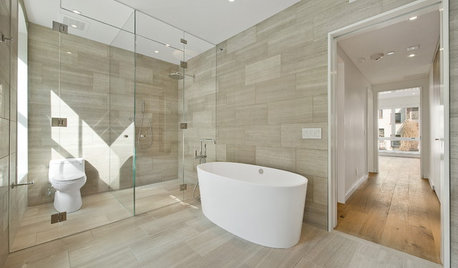
REMODELING GUIDESTransition Time: How to Connect Tile and Hardwood Floors
Plan ahead to prevent unsightly or unsafe transitions between floor surfaces. Here's what you need to know
Full Story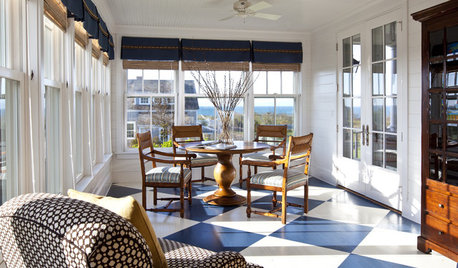
FLOORSHow to Paint Your Hardwood Floors
Know how to apply nail polish? Then you can give your wooden floors a brand-new look
Full Story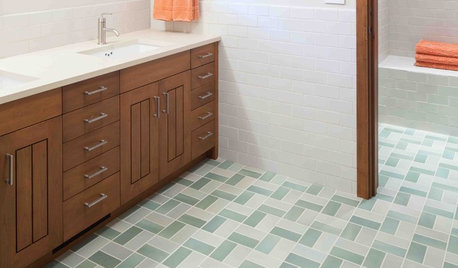
GREAT HOME PROJECTSHow to Install a New Tile Floor
Is it time to replace your tile floor? Here’s how to get it done, which pros to call and what it will cost
Full Story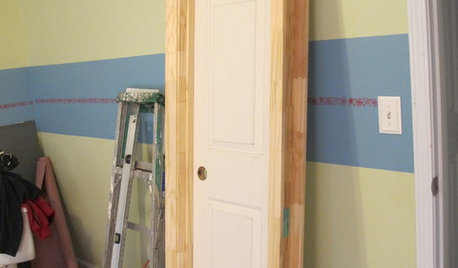
REMODELING GUIDESDIY: How to Install a Door
Homeowners who aren't afraid of nail guns can tackle their own pre-hung door project in a couple of hours
Full Story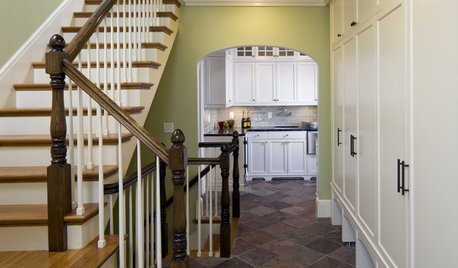
TILE6 Questions to Answer Before You Install Tile Flooring
Considering these things before tackling your floors can get you a better result
Full Story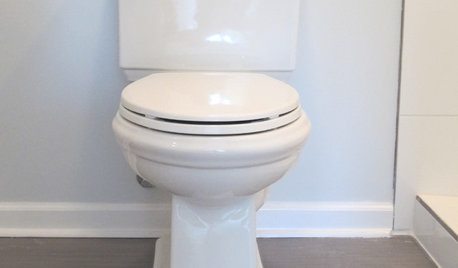
BATHROOM DESIGNHow to Install a Toilet in an Hour
Putting a new commode in a bathroom or powder room yourself saves plumber fees, and it's less scary than you might expect
Full Story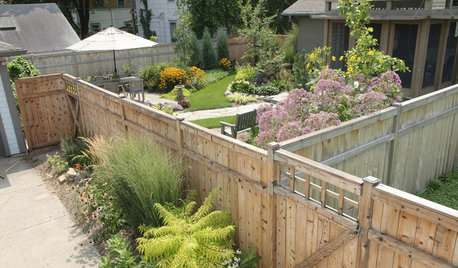
FENCES AND GATESHow to Install a Wood Fence
Gain privacy and separate areas with one of the most economical fencing choices: stained, painted or untreated wood
Full Story



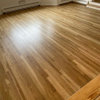

Uptown Floors